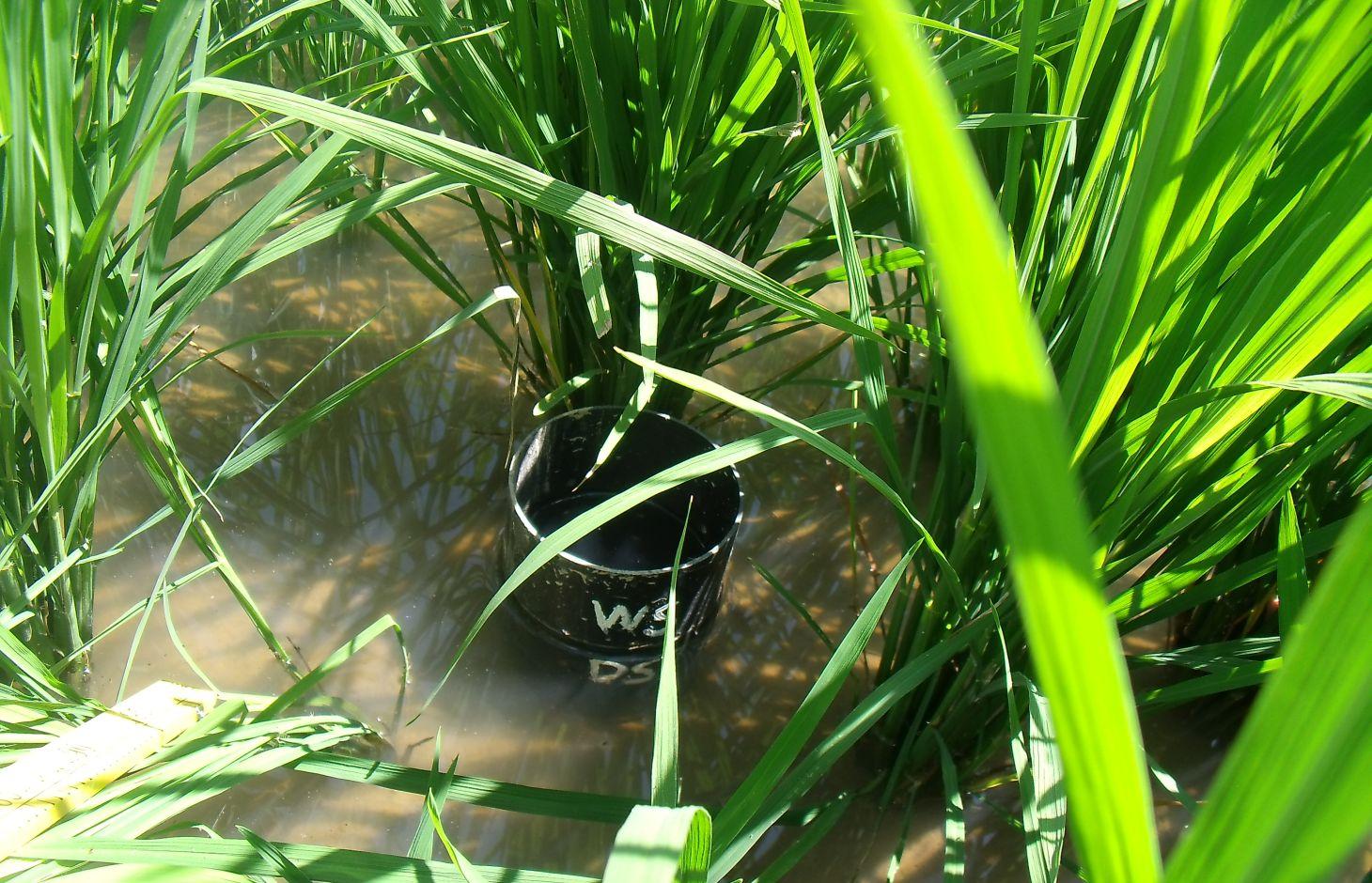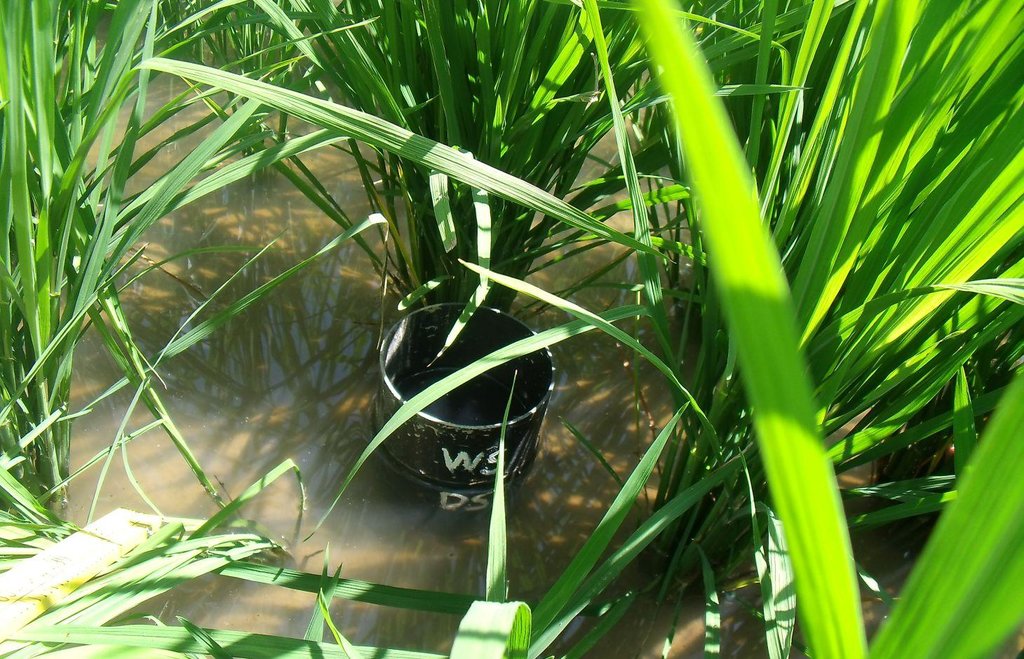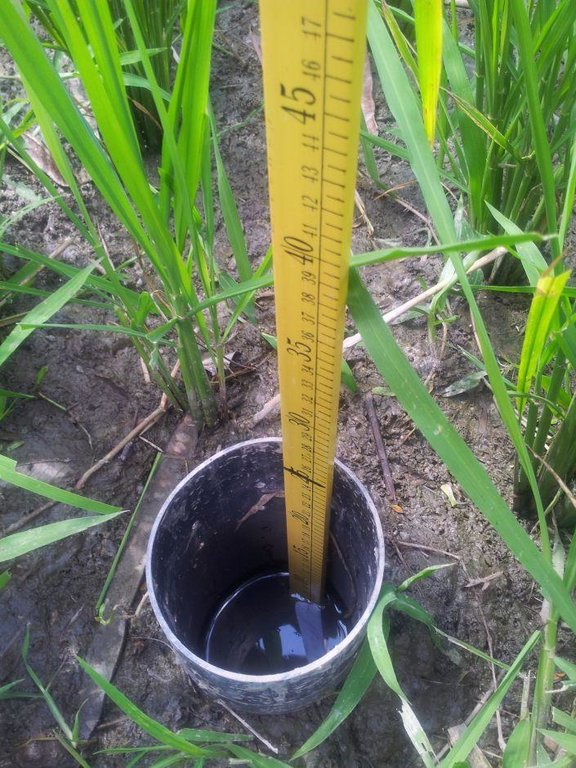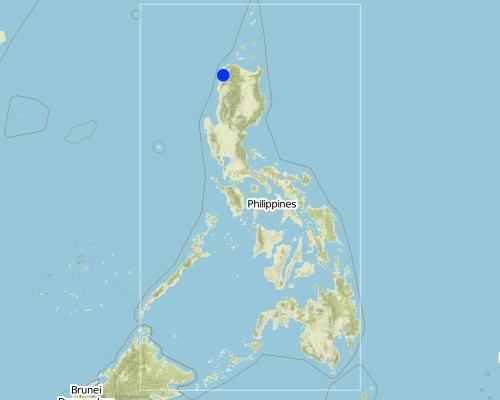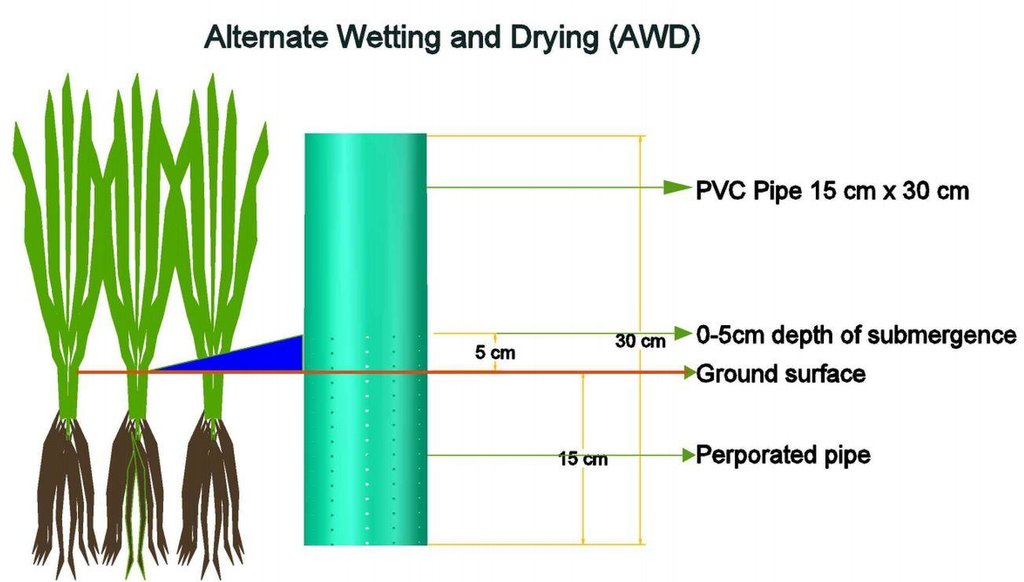Alternate Wetting and Drying [الفيليبين]
- تاريخ الإنشاء:
- تحديث:
- جامع المعلومات: Philippine Overview of Conservation Approaches and Technologies
- المحرر: –
- المُراجع: David Streiff
technologies_1725 - الفيليبين
عرض الأقسام
توسيع الكل طي الكل1. معلومات عامة
1.2 تفاصيل الاتصال بالأشخاص الرئيسيين لمصدر المعلومات والمؤسسات المشاركة في تقييم وتوثيق التقنية
الشخص (الأشخاص) الرئيسي لمصدر المعلومات
متخصص في الإدارة المستدامة للأراضي:
Dinamling Djolly Ma
DA-BSWM
الفيليبين
متخصص في الإدارة المستدامة للأراضي:
Raquid Jemar G.
DA-BSWM
الفيليبين
متخصص في الإدارة المستدامة للأراضي:
Martinez Mamerto F.
DA-BSWM
متخصص في الإدارة المستدامة للأراضي:
Pascual Kristine
Philrice
الفيليبين
متخصص في الإدارة المستدامة للأراضي:
Sibayan Evangeline B.
Philrice
الفيليبين
اسم المؤسسة (المؤسسات) التي سهلت توثيق/تقييم التقنية (إذا كان ذلك على صلة)
Bureau of Soils and Water Management (Bureau of Soils and Water Management) - الفيليبيناسم المؤسسة (المؤسسات) التي سهلت توثيق/تقييم التقنية (إذا كان ذلك على صلة)
Philippine Rice Research Institute (PhilRice) - الفيليبين1.3 الشروط المتعلقة باستخدام البيانات الموثقة من خلال WOCAT
متى تم تجميع البيانات (ميدانيا)؟:
11/02/2016
يوافق جامع المعلومات والشخص (لاشخاص) الرئيسي لمصدر المعلومات على الشروط المتعلقة باستخدام البيانات الموثقة من خلال WOCAT:
نعم
1.5 الإشارة إلى الاستبيان (الاستبيانات) حول مناهج الإدارة المستدامة للأراضي
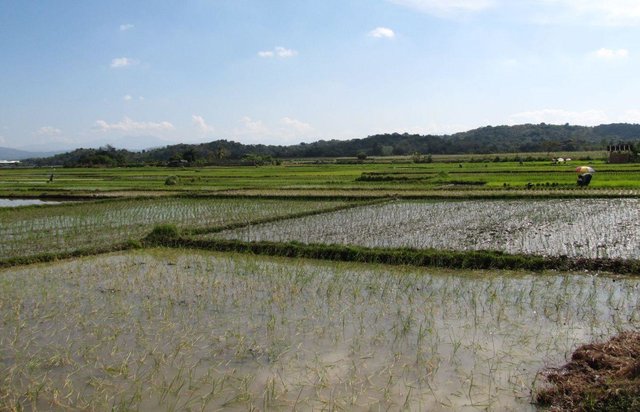
Palayamanan: Climate Change Adaptation Strategy for Lowland Ecosystem [الفيليبين]
Synergistic mix of farming ventures implemented by the farm family based on the existing environment and their resources to address food security, income instability, and sustainability.
- جامع المعلومات: Philippine Overview of Conservation Approaches and Technologies
2. وصف تقنيةالإدارة المستدامي للأراضي
2.1 وصف مختصر للتقنية
تعريف التقنية:
Alternate Wetting and Drying is a water-use management technique wherein irrigation water input could be substantially reduced to as much as 35% without significantly affecting rice yields.
2.2 وصف تفصيلي للتقنية
الوصف:
It was observed that most of the farmer’s irrigation practice of continuously flooding their rice fields is wasteful and uneconomical. The imbalance amount of water, either in deficit or excess, might affect the development and productivity of the crops.
With this inefficient water use and coupled by the increasing frequency of drought, vulnerability to water scarcity is inevitable. Furthermore, it has been recognized that poor water management practices contributed to the process of land degradation. Hence, there is a need to practice proper water management in rice cultivation. As an integral part of the Palayamanan system, the Philippine Rice Research Institute (PhilRice) introduced a water saving technology to the farmers called Alternate Wetting and Drying (AWD).
The AWD modifies the irrigation scheduling and application and eventually the amount of water to be use in the field. Irrigation water is applied a few days after the disappearance of the ponded water in the so-called “observation well”. Hence, the field is alternately flooded and non-flooded.
Purpose of the Technology: The following are the purpose of this technology: (1)reducing water use for irrigation so that it can be used for other purposes, (2) reducing the use of irrigation water because there is less of it, and (3) reducing the use of irrigation water to reduce the cost. Emission of greenhouse gas (GHG) specifically on methane is reduced since this is caused by flooding of ricefields.
Establishment / maintenance activities and inputs: Practical implementation of AWD is facilitated using a simple tool called a 'field water tube' as observation well, used in monitoring the water level in the field.It is made of a 25 cm long PVC pipe with a diameter of 10 to 15 cm. In some instances, bamboo can be used instead of the PVC pipe. The pipe is perforated with many holes on all sides to allow lateral movement of water in the root zone. It is installed into the soil by ensuring that 10 (dry season) or 5 (wet season) cm protrudes above the soil surface. Soil must be removed inside the tube so that the bottom is visible. During the first 21 to 30 days after direct seeding or transplanting, 2 to 3 cm of water is maintained to control weeds and to ensure that the crop has already
recovered from transplanting shock. AWD is imposed after 21 to 30 days where the water in the tube is monitored. Once the water inside the tube disappears, irrigation is applied to a water depth of 5 cm above soil surface. It is noted that during fertilizer application and flowering stage, sufficient water is maintained to avoid spikelet sterility. Terminal drainage from one to two weeks before the expected time of harvest is also done to promote uniform maturity of the crop and to facilitate easement of post-harvest operations in the field.
Natural / human environment: The area is under a humid climate experiencing wet and dry season with an annual average rainfall ranging from 1000-1500 mm per year. The technology was applied to irrigated rice field in flat and plain areas.
2.3 صور التقنية
2.5 البلد/المنطقة/المواقع التي تم تنفيذ التقنية فيها والتي يغطيها هذا التقييم
البلد:
الفيليبين
المنطقة/الولاية/المحافظة:
San Nicolas, Dingras
مزيد من التفاصيل حول الموقع:
Ilocos Norte
Map
×2.6 تاريخ التنفيذ
في حالة عدم معرفة السنة بالتحديد، يرجى الإشارة إلى التاريخ التقريبي:
- منذ 10-50 سنة
2.7 إدخال التقنية
حدد كيف تم إدخال التقنية:
- من خلال المشاريع/ التدخلات الخارجية
3. تصنيف تقنية الإدارة المستدامي للأراضي
3.2 نوع (أنواع) استخدام الأراضي الحالية حيث يتم تطبيق التقنية

الأراضي الزراعية
- زراعة سنوية
المحاصيل الرئيسية (المحاصيل النقدية والغذائية):
major cash crop: rice
major food crop: rice
التعليقات:
Major land use problems (compiler’s opinion): lack of irrigation water
3.3 مزيد من المعلومات حول استخدام الأراضي
أخرى (مثل ما بعد الفيضانات):
- controlled flooding
التعليقات:
The field is alternately flooded and non-flooded.
عدد مواسم الزراعة في السنة:
- 2
3.4 مجموعةالإدارة المستدامة للأراضي التي تنتمي إليها هذه التقنية
- إدارة الري (بما في ذلك إمدادات المياه والصرف الصحي)
3.5 انتشار التقنية
حدد انتشار التقنية:
- منتشرة بالتساوي على مساحة
إذا كانت التقنية منتشرة بالتساوي على منطقة ما، فحدد المنطقة التقريبية المغطاة:
- < 0.1 كم2 (10 هكتار)
التعليقات:
This is practiced in most of the "Palayamanan" sites in Ilocos Norte.
3.6 التدابير التقنية في مجال إلادارة المستدامة للأراضي

التدابير الإدارية
- M4: تغيير كبير في توقيت الأنشطة
- M7: أخرى
التعليقات:
Main measures: management measures
Specification of other management measures: water use management
3.7 الأنواع الرئيسية من تدهور الأراضي التي تناولتها التقنية

تدهور المياه
- (Hs): التغيير في كمية المياه السطحية
التعليقات:
Main type of degradation addressed: Hs: change in quantity of surface water
Main causes of degradation: crop management (annual, perennial, tree/shrub), other human induced causes (specify) (water use management)
3.8 منع أو حد أو عكس تدهور الأراضي
تحديد هدف التقنية فيما يتعلق بتدهور الأراضي:
- منع تدهور الأراضي
التعليقات:
Main goals: prevention of land degradation
4. المواصفات الفنية، وأنشطة التنفيذ، والمدخلات، والتكاليف
4.1 الرسم الفني للتقنية
4.2 المواصفات الفنية/شروحات الرسم الفني
PVC pipe used for the technology.
Location: Ilocos Norte
Technical knowledge required for field staff / advisors: moderate
Technical knowledge required for land users: moderate
Main technical functions: more efficient water use
Major change in timing of activities: AWD modifies the irrigation scheduling and application
Other type of management: Water use management on irrigation water is applied a few days after the disappearance of ponded water in the field water tube.
4.3 معلومات عامة بخصوص حساب المدخلات والتكاليف
حدد العملة المستخدمة لحساب التكاليف:
- دولار أمريكي
اذكر متوسط تكلفة أجر العمالة المستأجرة في اليوم الواحد:
3.33
4.4 أنشطة التأسيس
| النشاط | نوع التدبير | التوقيت | |
|---|---|---|---|
| 1. | Preparation of the PVC/bamboo pipes | إدارية | |
| 2. | Perforation with many holes on all sides of the PVC/bamboo pipe | إدارية |
4.5 التكاليف والمدخلات اللازمة للتأسيس
| تحديد المدخلات | الوحدة | الكمية | التكاليف لكل وحدة | إجمالي التكاليف لكل مدخل | % من التكاليف التي يتحملها مستخدمو الأراضي | |
|---|---|---|---|---|---|---|
| العمالة | Perforation with many holes on all sides of the PVC/bamboo pipe | Person/day | 1,0 | 3,33 | 3,33 | 100,0 |
| مواد البناء | Preparation of the PVC/bamboo pipes | piece | 1,0 | 4,44 | 4,44 | |
| إجمالي تكاليف إنشاء التقنية | 7,77 | |||||
4.6 الصيانة/الأنشطة المتكررة
| النشاط | نوع التدبير | التوقيت/الوتيرة | |
|---|---|---|---|
| 1. | Installation of the PVC/bamboo pipe into the soil | إدارية |
5. البيئة الطبيعية والبشرية
5.1 المناخ
هطول الأمطار السنوي
- < 250 مم
- 251- 500 ملم
- 501 - 750ملم
- 1,000-751 ملم
- 1,500-1,100 ملم
- 2,000-1,500 ملم
- 3,000-2,001 ملم
- 4,000-3,100 ملم
- > 4000 ملم
المنطقة المناخية الزراعية
- رطبة
Thermal climate class: tropics
5.2 طوبوغرافيا
متوسط الانحدارات:
- مسطح (0-2%)
- بسيط (3-5%)
- معتدل (6-10%)
- متدحرج (11-15%)
- تلال (16-30%)
- شديدة الانحدار(31-60%)
- فائقة الانحدار (>60%)
التضاريس:
- هضاب/سهول
- أثلام مرتفعة
- المنحدرات الجبلية
- منحدرات التلال
- منحدرات في السفوح
- قاع الوادي
المنطقة الارتفاعية:
- 100-0 متر فوق سطح البحر
- 500-101 متر فوق سطح البحر
- 1,000-501 متر فوق سطح البحر
- 1,500-1,001 متر فوق سطح البحر
- 2,000-1,501 متر فوق سطح البحر
- 2,500-2,100 متر فوق سطح البحر
- 3,000-2,501 متر فوق سطح البحر
- 4,000-3,001 متر فوق سطح البحر
- > 4000 متر فوق سطح البحر
وضح ما إذا كانت التقنية مطبقة على وجه التحديد في:
- غير ذات صلة
5.3 التربة
متوسط عمق التربة:
- ضحل جدًا (0-20 سم)
- ضحلة (21-50 سم)
- متوسطة العمق (51-80 سم)
- عميقة (81-120 سم)
- عميقة جدًا (> 120 سم)
قوام التربة (التربة السطحية):
- متوسط ( طميي، سلتي)
5.4 توافر المياه ونوعيتها
توافر المياه السطحية:
جيد
نوعية المياه (غير المعالجة):
مياه شرب جيدة
5.5 التنوع البيولوجي
تنوع الأنواع:
- متوسط
5.6 خصائص مستخدمي الأراضي الذين يطبقون التقنية
التوجه السوقي لنظام الإنتاج:
- مختلط (كفاف/ تجاري)
الدخل من خارج المزرعة:
- أقل من % 10من كامل الدخل
المستوى النسبي للثروة:
- متوسط
أفراداً أو مجموعات:
- المجموعات/ المجتمع المحلي
مستوى المكننة:
- عمل يدوي
- الجر الحيواني
الجنس:
- رجال
اذكر الخصائص الأخرى ذات الصلة لمستخدمي الأراضي:
Land users applying the Technology are mainly common / average land users
Population density: 10-50 persons/km2
Market orientation: Rice produced are intended for market and food consumption for the family
Annual population growth: 1% - 2%; 1%
5.7 متوسط مساحة الأرض المملوكة أو المستأجرة من قبل مستخدمي الأراضي الذين يطبقون التقنية
- < 0.5 هكتارا
- 0.5 - 1 هكتار
- 1 -2 هكتار
- 2 - 5 هكتار
- 5 - 15 هكتار
- 15 - 50 هكتار
- 50 - 100هكتار
- 500-100 هكتار
- 1,000-500 هكتار
- 10,000-1,000 هكتار
- > 10,000 هكتار
هل يعتبر هذا نطاقًا صغيرًا أو متوسطًا أو واسعا (في إشارة إلى السياق المحلي)؟:
- على نطاق صغير
التعليقات:
Average area of land owned or leased by land users applying the Technology: < 0.5 ha, 0.5-1 ha and1-2 ha
5.8 ملكية الأراضي، وحقوق استخدام الأراضي، وحقوق استخدام المياه
ملكية الارض:
- فردية، يوجد سند ملكية
حقوق استخدام الأراضي:
- مؤجر
- فردي
حقوق استخدام المياه:
- مجتمعي (منظم)
5.9 الوصول إلى الخدمات والبنية التحتية
الصحة:
- ضعيف
- معتدل
- جيد
التعليم:
- ضعيف
- معتدل
- جيد
المساعدة التقنية:
- ضعيف
- معتدل
- جيد
العمل (على سبيل المثال خارج المزرعة):
- ضعيف
- معتدل
- جيد
الأسواق:
- ضعيف
- معتدل
- جيد
الطرق والنقل:
- ضعيف
- معتدل
- جيد
الخدمات المالية:
- ضعيف
- معتدل
- جيد
6. الآثار والتصريحات الختامية
6.1 الآثار التي أظهرتها التقنية في الموقع
الآثار الاجتماعية والاقتصادية
توافر المياه ونوعيتها
الطلب على مياه الري
آثار اجتماعية واقتصادية أخرى
weed growth during dry period
التعليقات/ حدد:
seen as disadvantage
الآثار الاجتماعية والثقافية
التخفيف من حدة الصراع
الآثار الايكولوجية
دورة المياه / الجريان السطحي
الجريان السطحي
تصريف المياه الزائدة
التبخر
6.3 تعرض التقنية وحساسيتها لتغير المناخ التدريجي والظواهر المتطرفة/الكوارث المرتبطة بالمناخ (كما يراها مستخدمو الأراضي)
الظواهر المتطرفة / الكوارث المرتبطة بالمناخ
الكوارث المناخية
| كيف تتعامل التقنية مع ذلك؟ | |
|---|---|
| جفاف | جيدا |
الكوارث الهيدرولوجية
| كيف تتعامل التقنية مع ذلك؟ | |
|---|---|
| فيضان عام (نهر) | جيدا |
6.4 تحليل التكلفة والعائد
كيف يمكن مقارنة العوائد نسبة لتكاليف الإنشاء (من وجهة نظر مستخدمي الأراضي)؟
عوائد قصيرة الأجل:
إيجابي
عوائد طويلة الأجل:
إيجابي
كيف تتم مقارنة العوائدمع كلفة الصيانة/التكاليف المتكررة (من وجهة نظر مستخدمي الأراضي)؟
عوائد قصيرة الأجل:
إيجابي
عوائد طويلة الأجل:
إيجابي
6.5 اعتماد التقنية
التعليقات:
Comments on acceptance with external material support: No exact data is available to determine the numbers of land user who adopted the technology but most of the "Palayamanan" farmer partners in the irrigated areas adopted and practiced it.
Comments on spontaneous adoption: No exact data is available to determine the numbers of land user who adopted the technology but most of the "Palayamanan" farmer partners in the irrigated areas adopted and practiced it.
There is a moderate trend towards spontaneous adoption of the Technology
Comments on adoption trend: Most of the land users practicing "Palayamanan" in the municipality and province of Ilocos Norte is adopting the technology.
6.7 نقاط القوة / المزايا / الفرص التي توفرها التقنية
| نقاط القوة/ المزايا/ الفرص من وجهة نظر مستخدمي الأراضي |
|---|
| Positive outcome primarily in water savings without significant yield difference from the usual practice. |
| نقاط القوة/ المزايا/ الفرص من وجهة نظر جامع المعلومات أو غيره من الاشخاص الرئيسيين لمصدر المعلومات |
|---|
| Simplicity of the technology's method. |
| AWD leads to firmer soil conditions at harvest, which is beneficial to operating machines in the field. |
6.8 نقاط ضعف / مساوىء / مخاطر التقنية وسبل التغلب عليها
| نقاط الضعف/ المساوىء/ المخاطر من وجهة نظر مستخدم الأراضي | كيف يمكن التغلب عليها؟ |
|---|---|
| Prone to weed growth during the period when the soil is dry. | Proper weed management |
الروابط والوحدات المواضيعية
توسيع الكل طي الكلالروابط

Palayamanan: Climate Change Adaptation Strategy for Lowland Ecosystem [الفيليبين]
Synergistic mix of farming ventures implemented by the farm family based on the existing environment and their resources to address food security, income instability, and sustainability.
- جامع المعلومات: Philippine Overview of Conservation Approaches and Technologies
الوحدات المواضيعية
لا يوجد وحدات مواضيعية


